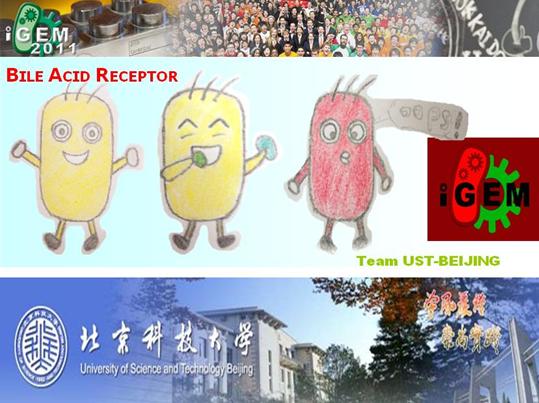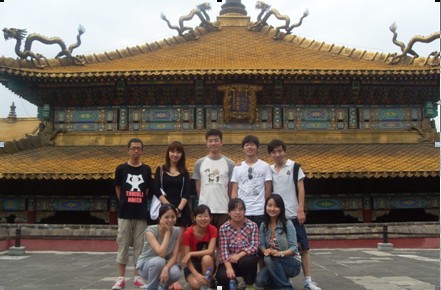Team:UST-Beijing/Project
From 2011.igem.org
(→Part 2) |
(→We are engineering a bile acid sensor in E.coli and others) |
||
| Line 56: | Line 56: | ||
chimeric nuclear receptors. Through directed molecular evolution, a harmonious signal network regulating | chimeric nuclear receptors. Through directed molecular evolution, a harmonious signal network regulating | ||
metabolism of both prokaryocytes and their host eukaryocytes in the digestive tract is feasible. | metabolism of both prokaryocytes and their host eukaryocytes in the digestive tract is feasible. | ||
| + | |||
| + | PR,whichisaabbreviationofproteorhodopsin,wasdiscoveredin2000throughshortgunsequencingofseawateroffthecoastofCalifornia.Itisaakindofmenbraneproteinsthatgeneratesaprotonmotiveforce(pmf)thatcanbeusedforadenosinetriphosphate(ATP)synthesisasalight-activatedprotonpump.Inourexperiment,wereplacedthePR’sprecusorsequencewiththatofcytochromeoxidasesubunit4isoform1,mitochondrialprecursor(Homosapiens).SoPRcanbefixedintheinnermembraneofmitochrondria.Meanwhile,allthecodonsareoptimizedaccordingtocodonusagebiasforHomosspiens.Then,thegeneofPRisconstructedinpSG5vectorforeukaryoticexpression. | ||
| + | FunctionalPRrequiresthecovalentbindingofretinal,whichissynthesizedfrom-carotene. | ||
== Project Details== | == Project Details== | ||
Revision as of 09:28, 4 September 2011
| You can write a background of your team here. Give us a background of your team, the members, etc. Or tell us more about something of your choosing. | |
|
Gene H-transfer: bile acid receptor in E.coli & proteorhodpsin in mitochindrial inner membrane
| |
| Team Example |
| Home | Team | Official Team Profile | Project | Parts Submitted to the Registry | Modeling | Notebook | Safety | Attributions |
|---|
Contents |
We are engineering a bile acid sensor in E.coli and others
Using lacI DNA-binding domain and LXRbeta ligand-binding domain, we made an artificial bile acid receptor which can regulate expression of target gene within a natural lacI operon. As proof of principle, we
demonstrate that regulation of bacteria gene expression by host eukaryocyte metabolites is achievable using chimeric nuclear receptors. Through directed molecular evolution, a harmonious signal network regulating metabolism of both prokaryocytes and their host eukaryocytes in the digestive tract is feasible.
PR,whichisaabbreviationofproteorhodopsin,wasdiscoveredin2000throughshortgunsequencingofseawateroffthecoastofCalifornia.Itisaakindofmenbraneproteinsthatgeneratesaprotonmotiveforce(pmf)thatcanbeusedforadenosinetriphosphate(ATP)synthesisasalight-activatedprotonpump.Inourexperiment,wereplacedthePR’sprecusorsequencewiththatofcytochromeoxidasesubunit4isoform1,mitochondrialprecursor(Homosapiens).SoPRcanbefixedintheinnermembraneofmitochrondria.Meanwhile,allthecodonsareoptimizedaccordingtocodonusagebiasforHomosspiens.Then,thegeneofPRisconstructedinpSG5vectorforeukaryoticexpression. FunctionalPRrequiresthecovalentbindingofretinal,whichissynthesizedfrom-carotene.
 "
"

